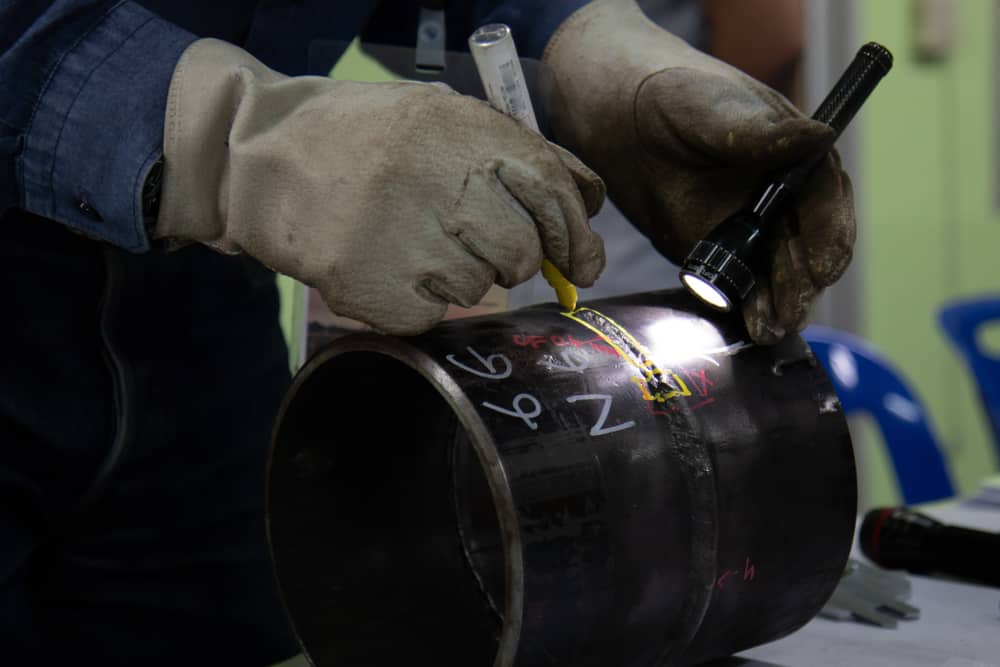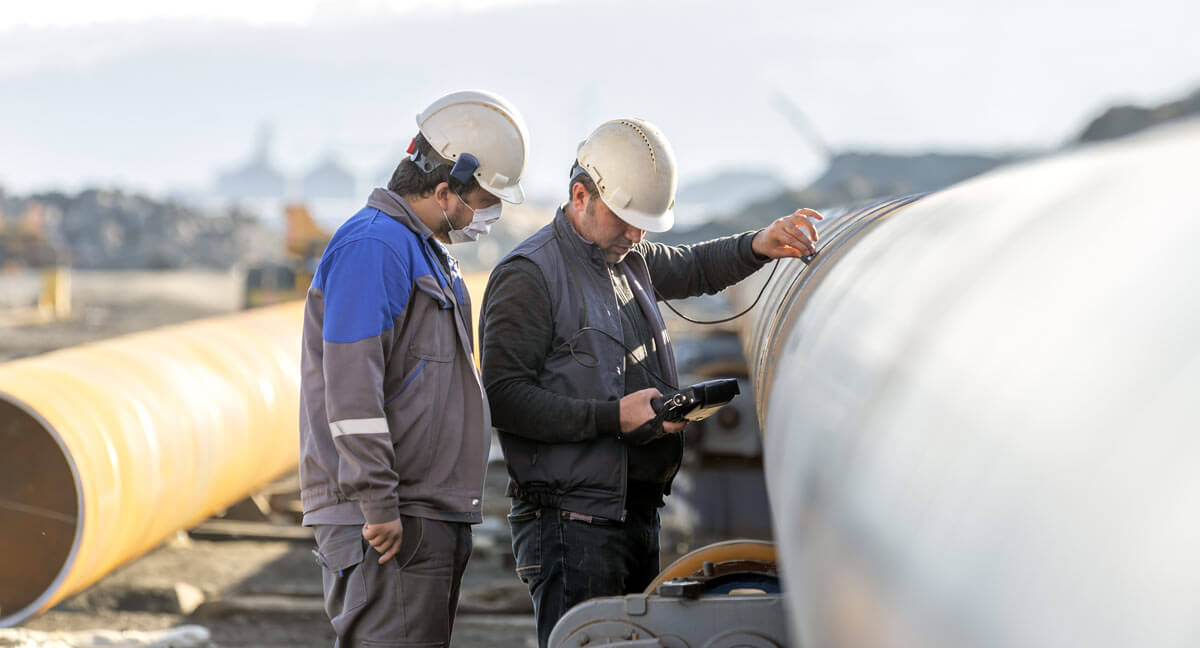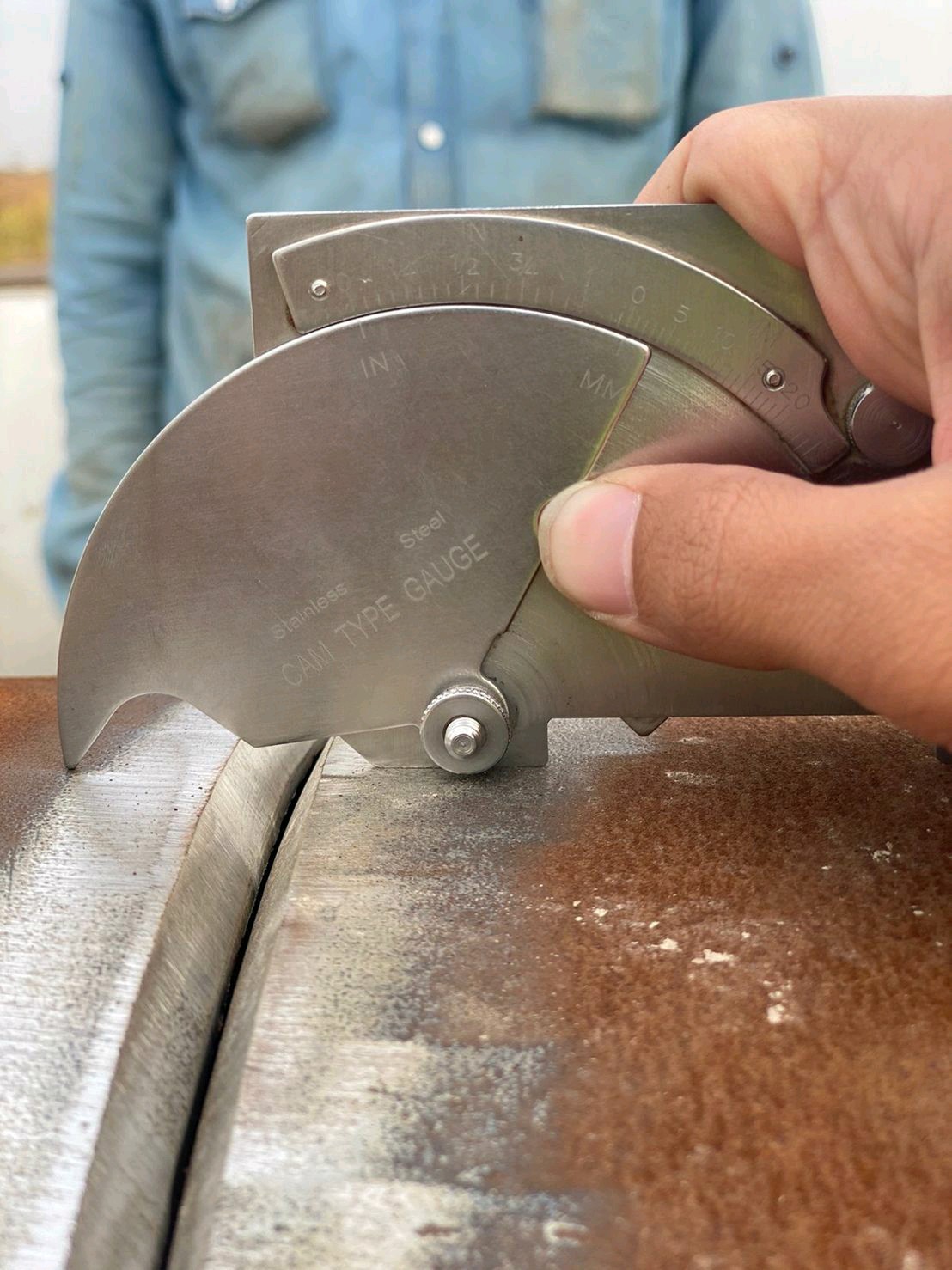How Regular Welding Inspection Madison Can Conserve You Money And Time
Discovering Advanced Tools and Methods for Accurate Welding Assessment
In the world of welding examination, the quest of accuracy and dependability is paramount, stimulating the development of innovative devices and approaches. Technologies such as phased selection ultrasonic testing and digital radiography are changing problem discovery, supplying unequaled accuracy in characterizing welding defects. In addition, laser scanning developments and computerized inspection systems, geared up with man-made knowledge, are redefining the landscape by lowering human mistake and enhancing precaution. As these advanced strategies proceed to evolve, they promise not only to change examination techniques yet additionally to raise appealing concerns about the future of quality assurance in industrial applications.
Ultrasonic Testing Advancements
Ultrasonic testing advancements regularly represent the forefront of improvements in welding inspection modern technologies. These advancements have dramatically enhanced the capability to find and evaluate discontinuities within bonded frameworks, ensuring improved stability and safety - Welding Inspection Madison. Ultrasonic testing employs high-frequency audio waves to pass through materials, offering detailed details about inner attributes without creating damages. The most up to date growths in this area have concentrated on raising precision, speed, and the ability to translate intricate information.

Furthermore, improvements in software program algorithms for data analysis have actually boosted the accuracy of defect detection and sizing. Automated ultrasonic testing systems now use high-resolution imaging, making it possible for detailed analyses of weld quality. These systems are usually integrated with sophisticated visualization devices, which assist in the analysis of results.
Radiographic Evaluation Methods
While ultrasonic screening technologies have set a high standard in non-destructive evaluation, radiographic assessment techniques remain to play an integral function in welding evaluation by providing unique understandings right into material stability. Radiographic screening (RT) utilizes the use of X-rays or gamma rays to pass through products, creating a radiograph that aesthetically represents the internal framework of a weld. This imaging capability is vital for discovering subsurface defects such as porosity, inclusions, and cracks that may not be visible via surface area assessments.
The process involves placing a radiation resource on one side of the weld and a detector on the opposite side. Variations in product thickness and thickness affect the attenuation of the rays, producing a different picture that exactly defines flaws. RT is particularly helpful for examining thick sections and complicated geometries where various other methods may fall short.
In spite of its effectiveness, radiographic inspection needs to be performed with rigorous adherence to safety and security procedures as a result of the unsafe nature of ionizing radiation. The analysis of radiographs calls for experienced employees, as the high quality of the analysis directly impacts the integrity of the assessment. As a result, recurring advancements in electronic radiography are enhancing image clearness and analysis effectiveness, enhancing RT's essential function in making certain weld high quality.
Laser Scanning Developments
Welcoming laser scanning modern technology in welding inspection has transformed the assessment of weld high quality and honesty. This sophisticated approach supplies a non-contact, high-resolution ways of capturing comprehensive 3D data of weld surface areas. Unlike standard evaluation techniques, laser scanning offers fast data acquisition, dramatically boosting the effectiveness and accuracy of weld evaluations. The innovation uses laser beam of lights to create precise 3D versions, which are vital for comprehensive analysis of weld dimensions, surface irregularities, and prospective flaws.
Laser scanning advancements have actually led to substantial renovations in discovering and defining surface area defects such as porosity, lack of combination, and undercuts. The high-resolution data allows inspectors to do thorough evaluations, making certain that welds satisfy stringent market standards. Furthermore, this technique sustains the advancement of digital records, promoting long-lasting quality control and traceability.
In addition, laser scanning technology integrates perfectly with software program options designed for automated defect discovery and analysis. The resultant data can be quickly shared and reviewed, advertising collective decision-making procedures. As industries remain to require greater requirements for weld top quality, laser scanning stays at click the center, using unparalleled accuracy and efficiency in welding examination.
Automated Examination Systems

Automated inspection systems supply the advantage of uniformity, getting rid of human mistake and subjectivity from the evaluation process. They are designed to run in numerous environments, from manufacturing floorings to remote area sites, making certain extensive protection. Welding look at these guys Inspection Madison. These systems can be configured to abide by specific welding standards and standards, offering thorough records and documents for high quality control purposes
Furthermore, the combination of cloud-based platforms facilitates the storage and evaluation of large quantities of examination information. This makes it possible for trend analysis and anticipating upkeep, permitting manufacturers to address possible issues before they escalate. The fostering of computerized evaluation systems is an essential relocation in the direction of boosting the dependability and performance of welding processes in industrial applications.

Enhancing Security and Efficiency
A significant element of boosting safety and security and performance in welding examination lies in the integration of cutting-edge modern technologies that improve operations and reduce threats. The adoption of advanced non-destructive testing (NDT) methods, such as ultrasonic testing, phased variety ultrasonic testing (PAUT), and radiographic testing, plays an essential function in making sure architectural integrity without jeopardizing the security of the workers included. These techniques enable detailed examinations with minimal downtime, reducing potential hazards linked with typical methods.
In addition, the application of real-time data analytics and machine knowing formulas has transformed the means inspection information is translated. By using anticipating analytics, prospective issues can be identified before they manifest into critical failures, making sure prompt interventions and upkeep. This aggressive technique considerably enhances functional efficiency and security in welding processes.
Additionally, remote evaluation technologies, including drones and robot spiders equipped with high-resolution video cameras, enable inspectors to assess next page hard-to-reach locations without revealing them to harmful problems. This not just enhances assessment accuracy yet also decreases human threat. By leveraging these advanced devices and methods, industries can attain greater security requirements and operational efficiency, inevitably leading to more lasting and reputable welding assessment methods.
Conclusion
The combination of advanced devices and approaches in welding examination dramatically boosts problem discovery and ensures architectural stability. Welding Inspection Madison. Developments such as phased array ultrasonic screening, electronic radiography, and laser scanning improve issue characterization, while automated examination systems and AI reduce human error. Remote modern technologies assist in safe evaluations in dangerous settings, promoting an aggressive upkeep technique. These innovations not just enhance inspection effectiveness but also add to enhanced safety and quality guarantee in commercial welding applications.

Ultrasonic testing advancements frequently represent the center of innovations in welding assessment innovations.While ultrasonic screening developments have set a high requirement in non-destructive examination, radiographic assessment strategies continue to play an integral function in welding inspection by offering special understandings into material stability.Embracing laser scanning innovation in welding inspection has actually transformed the evaluation of weld high quality and integrity. As industries continue to require higher criteria for weld quality, laser scanning remains at the center, supplying unequaled accuracy and performance in welding assessment.
Automated inspection systems supply the benefit of uniformity, removing human mistake and subjectivity from the examination procedure.